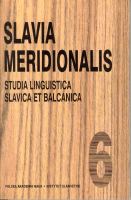Inchoatywność w języku polskim i bułgarskim. Studium porównawcze
Inchoativeness in Bulgarian and Polish. A Comparative Study
Author(s): Stanisław KarolakSubject(s): Language and Literature Studies
Published by: Instytut Slawistyki Polskiej Akademii Nauk
Summary/Abstract: The article deals with a comparative description of the bi-aspectual inchoative configuration which constitutes a non-causative variant of conclusive configuration. It is emphasized that exponents of this aspect include not only grammatical morphemes but also lexical morphemes, i.e. semantemes, while exponents of the configuration, i.e. compound aspects, include semantemes as well as concatenations of semantemes and graphemes. Accordingly, this comparative description of exponents of inchoactivity is divided into two quantitatively unequal subcategories: simple exponents – synchronic roots, e.g. Bulgarian opomn-(ja) se, and compound exponents, such as prefixal-root or root-suffixal ones. Both categories, in various proportions, are represented in the two compared languages. Among compound exponents one can distinguish concatenations of morphemes in which prefixes are of purely aspectual character, e.g. Bulgarian prefix za- occurring in a wide scope of distribution, much wider than its Polish genetic equivalent za-, as well as concatenations of morphemes in which prefixes are amalgams combining aspectual value with non-aspectual meanings. One example is the Polish prefix przy- in verbs of the przyblednąć type, which is a co-exponent of inchoativity as well as an exponent of attenuation, which of course has no aspectual character. A detailed description of inchoative exponents is documented with rich illustrative material from both compared languages.
Journal: Slavia Meridionalis
- Issue Year: 2006
- Issue No: 06
- Page Range: 107-162
- Page Count: 56
- Language: Polish

